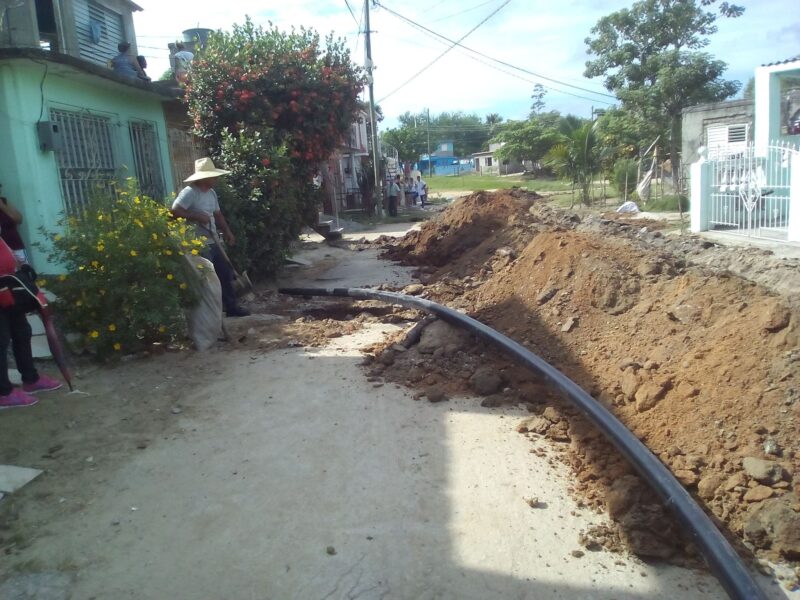Las Tunas.- The Delegation of Hydraulic Resources in Las Tunas to face the complex situation with the water supply that the province is experiencing due to the drought maintains the construction of works and other measures.
To the north of the territory, the work that prepares the aqueduct is advancing to replace the delivery in pipes and guarantee a certain stability in the service to more than 3,500 people in nine rural settlements on the route that goes to the beach, which will leave behind the irregular and expensive supply in pipes due to the use of fuel and other resources necessary for the transport.
Also in the north of the province, exactly in Manatí, where more than 6,500 people are affected, work is being done to recharge the underground basin in the Cerro Caisimú area through a conductor from the Yariguá dam, which must be completed before closing the first semester of this year.
The pipe loading area at this source and the supply to the campsite were suspended to prioritize the communities of La Guinea, Meriño, Cerro de Caisimú and the municipal seat, in addition to enabling easy access points in Bazarales and fillers in Vázquez for the train in charge of move the water to distant communities in the Manatiense geography.
In the same way, the assembly, maintenance and repair of pumping equipment in the Rincón and Piedra Hueca system, valve placement and other actions that ensure, in conditions of severe drought, the most regular service possible to the city of Las Tunas, continue. .
Due to its low level in the Jobabito and Juan Sáez dams, restrictions were established based on systematic adjustments to the balance of the vital liquid and considering the availability and priorities established in the water law, in addition to carrying out tours of the routes of the conductors to detect and remove illegalities.
Authorities and specialists maintain permanent monitoring of the sources and the hydrometer installation program continues, the rehabilitation of networks in communities of the municipalities of Puerto Padre and Jesús Menéndez and the construction of wells among other measures to protect livestock and other lines of the economy.
Author: Esnilda Romero Mañas
/asl/

